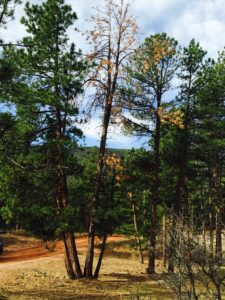Effects of Drought on Wildfires
When you camp in areas with a lot of greenery, you’ll find that making a campfire is pretty difficult. This doesn’t seem like a good thing for you at the time, but it is when it comes to the safety of you and people and wildlife
Green forests are healthy forests. The moisture in the branches and the soil will help to reduce the risk of fire. When there’s drought, the moisture content in living plants drop, and this can lead to disaster.
Dead Plants in Moist Conditions
You’ll hear a lot about how dead and diseased plants are the problem for wildfires. They are a big problem, but when in moist conditions, they offer a smaller threat. While they’re not soaking in the moisture naturally, they will take in some of the conditions around them along the top layers.
Brown grass and pine needles on the forest floor will absorb water, too. However, they lose it very quickly. In moist conditions, this isn’t as much of a concern as it would be in drought conditions.
1-Hour vs. 10-Hour Fuels
Small-diameter fuels like the brown grass and pine needles are known as “1-hour fuels.” They will respond quickly when the moisture levels change. Add more moisture and the fuels will react in a way that is good for putting out or preventing fires.
10-hour fuels are the small branches and woody stems. They take longer to absorb any of the moisture after any sort of rainfall.
Then there are the 100-hour fuels. They are dead branches and trees that are 1-3in in diameter. They take a long time to absorb the moisture. And yes, there are 1000-hour fuels, which are the larger logs and stumps. As you can imagine, these are the biggest concerns when it comes to forest fires.
These larger fuel sources aren’t too problematic in times of moisture. They can have as much as 30% moisture content. In a drought, they drop to just 3-12% depending on the size. In extreme drought, the larger trees and stumps can drop to just 5%.
Below 20% moisture, the wood will just sit in the forest and wait for a fire to find it.
It’s important to understand the moisture content. You don’t need to measure it to get a sense of danger. Just look around at the color of the leaves and pine needles. If they’re brown, the conditions in the forest aren’t good. You’ll want to be prepared to evacuate at the first sign of smoke.
